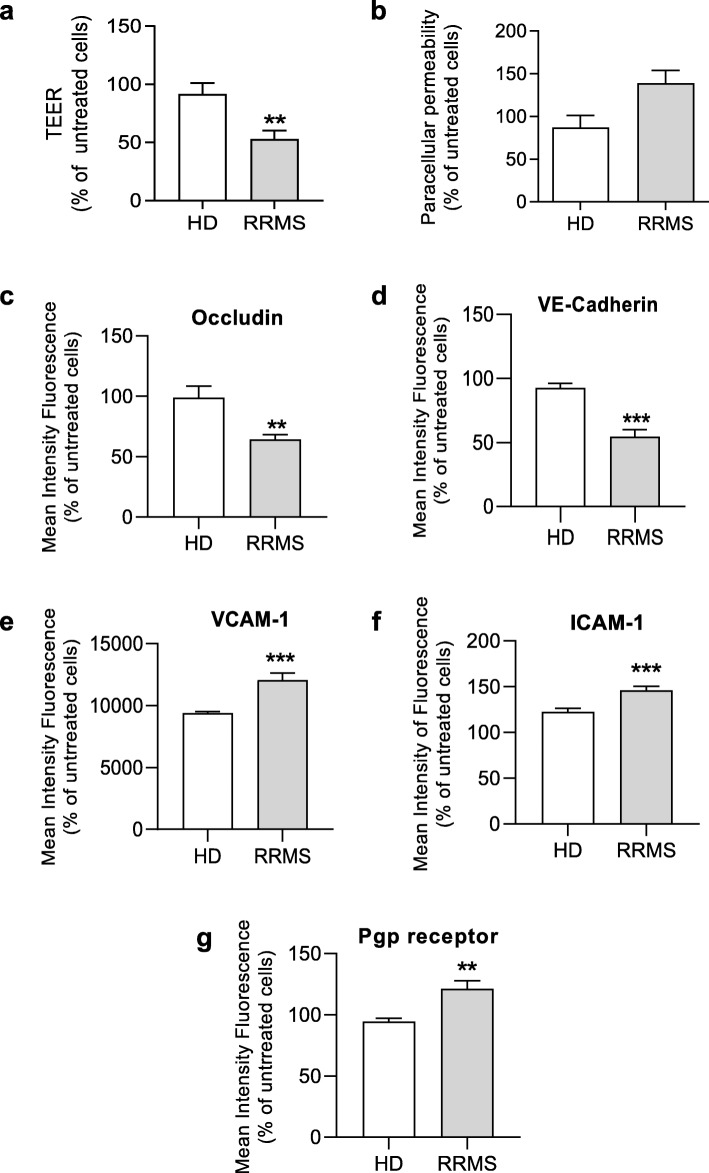Fig. 1.
Serum from RRMS patients significantly attenuates BBB function and induces a pro-inflammatory phenotype. Assessment of (a) the trans-endothelial electrical resistance (TEER) and (b) paracellular permeability of hCMEC/D3 monolayers to 70 kDa FITC-dextran following treatment for 16 h with 20% HD or naïve-to-treatment RRMS sera. c-g Expression of occludin (c), VE-Cadherin (d), ICAM-1 (e), VCAM-1 (f) and P-glycoprotein (Pgp) (g) in hCMEC/D3 cells treated with HD or RRMS sera. Data are presented as average of three experiments performed on n = 12-24 donors (pooled in pairs matched in sex, age and EDSS score for RRMS patients), expressed as mean + s.e.m. Statistical analysis are performed by Student’s t test or by Mann-Whitney U test (two-tails)*P ≤ 0.05, **P ≤ 0.01, ***P ≤ 0.001

